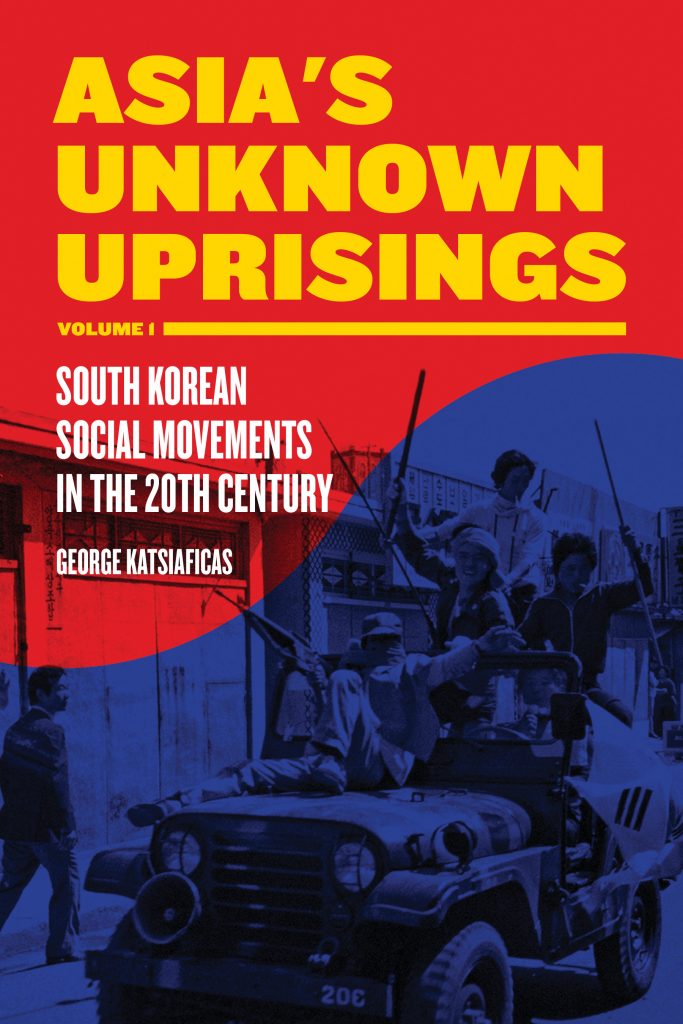By Michael Novick
Turning the Tide
September 2013
Katsiaficas’s history of South Korea’s “long Twentieth Century” of rebellions and insurgencies (from the Farmers’ War of 1894 to the 2008 candlelight protests of over a million Koreans, ignited by teenaged girls protesting the neo-liberal import of U.S. beef) is must reading. I cannot recommend it highly enough. It is well-sourced, clearly-written, and fascinating in its detail about the role of South Korea’s lumpen, farmers, youth and women, as well as factory and office workers, in wave after wave of massive clashes with the puppet regime aand the U.S. itself.
That these uprisings are relatively unknown in the U.S., which waged a bloody war in Korea and has occupied half the country, preventing its reunification for more than 60 years, is a measure of the Euro-centrism and “white blind spot” that plagues and hinders the development of the U.S. left. There are crucial lessons to be learned here, lessons which many other Asian societies paid close attention to as they were being learned and paid for with blood, and emulated with great success. Perhaps a lack of willingness to make those same type of sacrifices or shed as much blood for freedom explains why people in the U.S. have paid so little attention.
I do not except myself from that indictment. I am old enough to remember the “Korean War” (AKA UN ‘police action’). I did some study of the North Korean concept of juche (self-reliance) when the Black Panther Party popularized awareness of the North Koreans. I was aware of the Gwangju Uprising, and more recently the struggle of Jeju Islanders against turning their home into a U.S. Navy base. I have a grandson who is half-Korean. Yet I found 98% of the information and perspectives Katsiaficas provides about the intensity, duration, extent and militance of the struggles within South Korea to be eye-opening surprises, as well as tremendously rich, valuable source material on autonomous anti-imperialist struggles under conditions of occupation and dictatorship. Alongside han – the Koreans’ deep and abiding sense of collective sadness and unavenged oppression – Katsiaficas explicates hallyu – a Korean wave of robust collective civil society relationships and human-centered values – with great cultural currency not only across Asia but also in Africa, Latin America and even the U.S.
It is hard to do justice to a 400+ page volume (let alone its even-longer sequel, which reviews struggles in another nine Asian countries) in a few paragraphs of review. The details of that succession of insurgencies, one leading to the next, are beyond summary in a few short paragraphs. My main purpose is to send you to the source to read and consider it yourself, and to commend PM Press for its contribution in printing these two books. Volume One comprehensively covers the facts and import of South Korea’s own struggles – vitally important as the “Asian pivot” of US imperialism under Obama has clearly put the Empire’s cross-hairs on Korea and China. Katsiaficas correctly critiques some bourgeois academic histories that focus on ‘great men’ or deny the agency of the Korean masses. He documents the deep and abiding anti-Americanism among many South Koreans that has been the result of atrocities and occupation, imposition of dictatorship, unleashing of brutal military repression (including by so-called “human rights” paragon Jimmy Carter), and betrayal of promises of democratic reform. Long before Guatemala charged Rios Montt with genocide, S. Korea was able to indict and convict two ex-presidents of capital crimes.
But Katsiaficas also uses the Korean example to illuminate the importance of uprisings in general and their transformative impact on people’s collectivity, consciousness and social practice. He calls attention to the endless surprising intelligence and sacrifice of ordinary people. He examines the Korean experience to understand the connection among the economic, political and social struggles of working and oppressed people, looking at the role of autonomous organizing among women and industrial workers, the ability to function from clandestinity under dictatorial rule, as well as the contributions of ethnic and regional minorities and lumpen sectors of Korean society. He is also alert to the bitter consequences of failing to carry such struggles through to victory, as the Empire and their local allies can turn partial popular victories into mechanisms for rationalizing, deepening and intensifying capitalist exploitation. He is able to cast new light on the depth and duration of neo-liberalism not only in Korea but globally, and helps us understand how neo-liberalism + neo-conservatism = neo-colonialism.
The one area where I wish the author had provided more detail, more analysis and greater clarity is on the consequences of a split that emerged among popular and democratic forces. This was between two tendencies that essentially competed for dominance among more or less revolutionary-minded sectors, the NL (national liberation) and PD (people’s democracy) factions. He briefly summarizes the main points of disagreement between them about the nature of South Korean society, the relationship to North Korea (while both favor reunification, NL identified closely with juche and the DPRK [North Korea]). They also disagreed about the main enemy of the Korean people (is it US imperialism or the bourgeoisie, including Korea’s own?). But it is less clear how these divisions weakened the revolutionary forces, allowing the ascendancy of reformist, pro-U.S. and pro-capitalist politicians such as Kim Dae Jung and Kim Young Sam, who took office through electoral majorities once free elections were won. And it is less clear what the errors of either or both positions were, and what synthesis might be developed that will re-ignite struggles in South Korea under new circumstances, including global economic contraction, a new right government, and the renewed threat of war on the Korean peninsula. But if the book serves to whet your appetite for further study of Korean history and movements, and helps arm us to oppose US military occupation and war-mongering, it will have made an enormous contribution. And if it provokes your own deeper thinking about what the elements are within U.S. society that provide a basis for uprisings here, and for militant, sustained, self-sacrificing revolutionary insurgency, it will fulfill Katsiaficas’s purpose in writing it.







